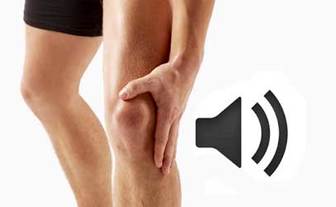|
Have you ever reached for something off the top shelf of your kitchen cabinet and heard or felt a subtle crackling sound in your shoulder? Or maybe been at the gym about to mount a pull-up bar only to feel a crunch or grind around your shoulder blade when making contact with the bar? Or what about in your hip?
If so, you’re not alone. As physical therapists, we deal these “snap, crackle, and pop” moments daily when treating our patients. The most likely explanation for such events is a term called "crepitation". This is defined as audible vibrations indicating an underlying fracture, the presence of gas within tissues, or the grinding of arthritic bone surfaces and tendon movement. Based on an initial examination, a skilled physical therapist can rule out fracture or gas in the tissues quite simply. Once this is accomplished, the grinding of arthritic bone surfaces and tendon movement is usually the cause. This refers the compression of bones due to tendon and muscle tightness.
0 Comments
First developed in 1973 by Chiropractic Dr. Kenzo Kase, Kinesio tape is a specially designed elastic tape. The original brand of Kinesio tape is made of 100% cotton, (no latex), with a wave pattern woven into the cloth to mimic fingerprints while the original concept was to assist the practitioner in the carryover of a treatment. In other words, it works to continually manipulate soft tissues, activate or inhibit muscles to ensure proper muscle firing patterns and alignment of a joint, treat swelling/lymphedema, and decrease both acute and chronic pain after the clinical appointment.
Proper application will not cause any skin irritation and should provide immediate relief to some degree. It can be used for a multitude of conditions such as: frozen shoulder, shoulder impingement/rotator cuff pathologies, thoracic outlet syndrome, low back pain, sacroiliac dysfunction and pain, patellar (knee cap) dysfunction, hamstring strains, achilles tendonosis, plantar fascitis, TMJ, headaches, whiplash, cervical and lumbar radiculopathy, ACL/MCL injuries, and chronic lymphedema, just to name a few. The American Heart Association has declared February Heart Month in order to raise awareness about heart disease. Heart disease is the leading cause of death in the United States. Often, it can be prevented with lifestyle changes. Here are some ways that you can improve your heart health:
1. Make an appointment to have your numbers checked: Your heart rate, blood pressure, and cholesterol numbers can give you and your doctor an indication of your overall heart health. If you and your doctor decide that medication is required to manage your high blood pressure or cholesterol, make sure to take it regularly as prescribed. With improvements in diet and increased exercise, you may be able to decrease the use of some medications. 2. Make small changes in your diet. Decreasing sugar, and using spices instead of salt can have a big impact in the long run. Increasing your fruits and vegetables will also improve your heart health. We wanted to share this recent article published in the Journal of Orthopaedic & Sports Physical Therapy about plantar fasciitis, a common cause of foot and heel pain. At Innovative Therapy & Wellness, we combine manual and exercise based physical therapy treatments in order to address your problems and improve symptoms quickly. This article explains the importance of this approach:
"One out of 10 people in the United States experience persistent pain along the bottom of the foot, a condition known as plantar fasciitis. In this country alone, outpatient clinics receive more than 1 million visits a year from people seeking help for this type of foot pain. In 2014, the Orthopaedic Section of the American Physical Therapy Association published updated clinical practice guidelines on the best treatments for patients with plantar fasciitis. The guidelines present evidence that strongly suggests a combination of manual therapy and rehabilitative exercises to help patients with this foot condition. In a more recent study published in the February 2017 issue of JOSPT, researchers reviewed the records of people with plantar fasciitis who were sent to physical therapy to determine whether this treatment lessened their pain. |
AuthorsA collaborative effort from the experienced staff at IT&W Archives
May 2023
Categories |
Blog updates |
|
2224 Virginia Beach Blvd Suite 106, Virginia Beach, VA 23454




 RSS Feed
RSS Feed

